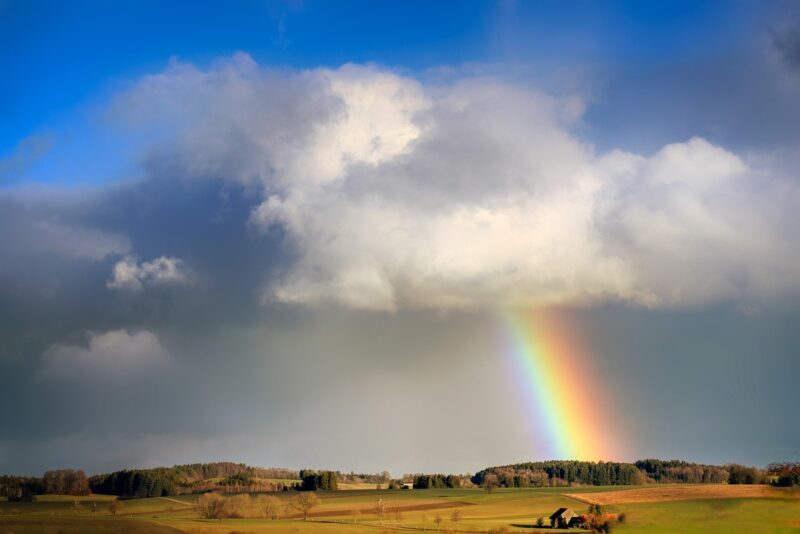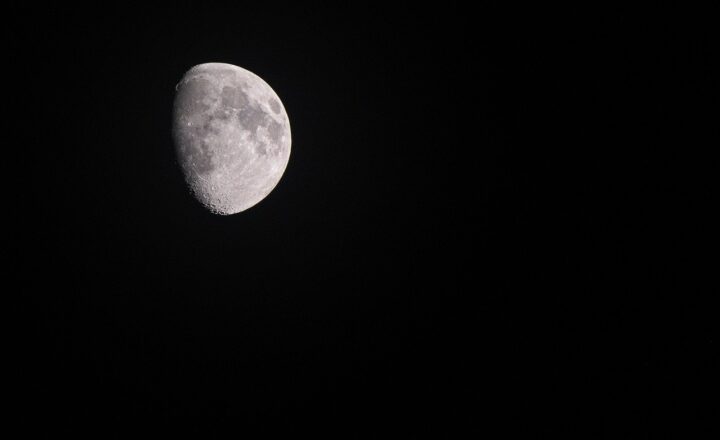The Science Behind Rainbows and Why We Only See Certain Colors
November 12, 2024

Rainbows are one of nature’s most breathtaking spectacles, a beautiful phenomenon that brings together color and science in a captivating display. To the untrained eye, a rainbow might simply appear as a beautiful arc of colors in the sky, but the reality is much more complex. This article dives deep into the science behind rainbows, explaining how they are formed, why we see specific colors, and the factors that influence the appearance of a rainbow.
1. What Causes a Rainbow?
To understand how a rainbow is formed, we must first examine the role of light and water droplets in the atmosphere. Rainbows are created through a process called refraction, reflection, and dispersion of light. Here’s how it works:
- Refraction: When sunlight enters a raindrop, it slows down and bends due to the change in medium from air to water. This bending of light is called refraction, and it occurs at different angles depending on the wavelength (color) of the light.
- Reflection: After refraction, the light reflects off the back of the raindrop. This internal reflection is crucial for the formation of the rainbow.
- Dispersion: As the light exits the raindrop, it bends again. This bending causes the light to spread out into its component colors, creating a spectrum. Different colors refract at different angles, with red at around 42 degrees and violet at about 40 degrees.
The combination of these processes results in the beautiful arch of colors we recognize as a rainbow.
2. The Color Spectrum of Rainbows
Most people identify a rainbow by the acronym ROYGBIV, which stands for the seven primary colors seen in a typical rainbow: Red, Orange, Yellow, Green, Blue, Indigo, and Violet. But why do we see these specific colors?
The colors we observe in a rainbow are a result of the dispersion of sunlight, which contains a full spectrum of colors. When sunlight passes through raindrops, each color bends at a different angle:
- Red: which has the longest wavelength, bends the least (around 42 degrees).
- Orange and Yellow: bend slightly more.
- Green: appears in the middle.
- Blue, Indigo, and Violet: have shorter wavelengths and bend more sharply, appearing lower in the sky.
This separation of light creates the vivid spectral colors we perceive when we look at a rainbow.
3. Atmospheric Conditions for Rainbows
Not every rain shower produces a rainbow. Several atmospheric conditions must align for a rainbow to be visible:
- Rain and Sunlight: There must be rain happening while the sun is shining; this is why rainbows often appear after storms.
- Viewing Angle: The observer must be positioned between the sun and the rain. The best vantage point is often with the sun behind you, shining onto the raindrops in front of you.
- Time of Day: Rainbows are most commonly seen in the early morning or late afternoon when the sun is lower in the sky, producing the appropriate angle for refraction.
These factors are crucial for anyone hoping to catch a glimpse of a rainbow.
4. Double Rainbows and Other Variations
Occasionally, you may observe not just a single rainbow, but a double rainbow. This phenomenon occurs due to a second reflection of light within the water droplet:
- First Rainbow: The primary rainbow appears with its typical order of colors.
- Second Rainbow: The secondary rainbow, which is usually fainter and found outside the first arc, has its colors in reverse order (violet on the outer edge, red on the inner).
Beyond double rainbows, you may also notice more complex optical phenomena such as supernumerary rainbows, which manifest as additional, closely spaced colorful bands inside the primary rainbow. These occur due to interference patterns and the different wavelengths of light.
5. Cultural Significance and Symbolism of Rainbows
Rainbows have long captured the human imagination and are often imbued with various cultural meanings. In many societies, they represent hope, promise, and the connection between different worlds.
For example:
- In Christianity: The rainbow symbolizes God’s promise to humanity after the Great Flood, representing peace and unity.
- In many indigenous cultures: Rainbows are seen as bridges between realms, connecting the physical with the spiritual.
- In literature and art: Rainbows are often used as symbols of hope, beauty, and eternity.
The enduring beauty of rainbows continues to inspire artists and storytellers worldwide.
Conclusion
Understanding the science behind rainbows enriches our appreciation for this natural wonder. From the physics of light to cultural symbolism, rainbows embody a fascinating blend of science and beauty. Next time you see a rainbow, remember the complex interplay of light, moisture, and perspective that makes this stunning phenomenon possible. Whether as a fleeting moment of beauty or as a symbol of hope, rainbows remind us of the wonder in the world around us, waiting to be explored and understood.
Rainbows can be seen as more than mere meteorological events; they are a reminder of the beauty found at the intersection of nature and science. And who knows? The next time you find yourself beneath a rain-soaked sky, keep your eyes peeled—you just might catch a glimpse of one of nature’s most spectacular displays.








